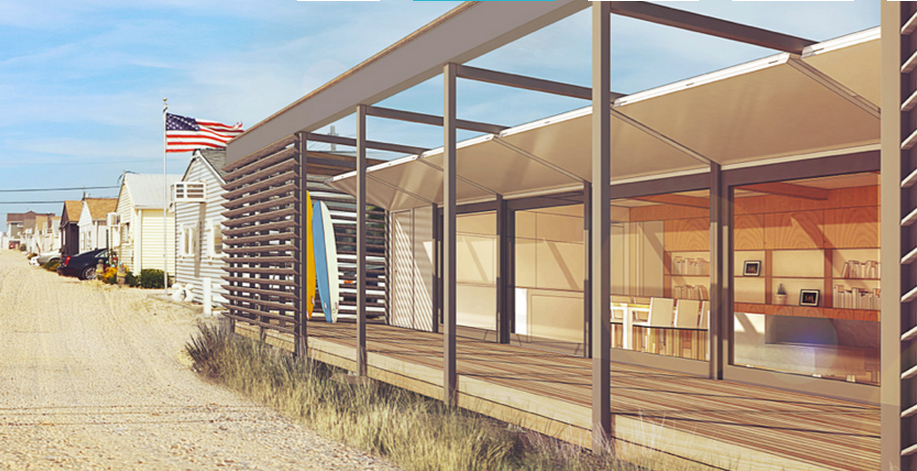Stevens Institute of Technology students are building a storm-ready house

A rendering of the SURE HOUSE depicted within a traditional Jersey Shore bungalow community. (Image courtesy of Stevens Institute of Technology)
Hurricane Sandy was personal for students at Stevens Institute of Technology in Hoboken.
They witnessed the humanitarian crisis that unfolded after the Hudson River spilled into the Mile Square City: portions of the city were underwater, some residents were trapped for days, and the National Guard patrolled the streets.
Further south along the Jersey Shore, the damage was catastrophic.
In the storm’s wake, the university — known for its science and engineering prowess — recognized the critical need to develop sustainable housing solutions and is now taking a leading role in designing a more storm-resilient future.
Its students are currently participating in the Solar Decathlon, a biannual competition hosted by the U.S. Department of Energy with the charge to “design, build and operate the most energy-efficient solar home within budgetary and building limits,” according to a university press release.
They’ve designed and will soon begin building the SURE HOUSE, a net-zero, solar-powered home, that will then be disassembled and transported to the competition site in Irvine, California, where it will once again be assembled for the Solar Decathlon exposition this fall.
“Designed to meet the needs of the middle and working class residents who live in the areas of coastal New Jersey and New York, the SURE HOUSE design takes into account the new flood maps issued by FEMA in the aftermath of Hurricane Sandy, as well as the economic feasibility of innovative approaches to building in these neighborhoods,” the university release said.
According to the project’s website, the house represents a “new direction in storm resilient coastal housing” by merging the design of the traditional beach bungalow with state of the art technologies. The result is a structure that “is armored against extreme weather, uses 90% less energy than its conventional cousins, powers itself through clean solar energy, and in the aftermath of a storm, becomes a hub for emergency power to the neighborhood.”
Allison Outwater, a student involved in the project, said that her team will donate the house “to some area at the Jersey Shore to give back to those affected by Sandy.”
Her team will begin building the house in a parking lot along Hoboken’s waterfront on April 6.
They expect to finish by June.
Visit the SURE HOUSE website for more information. Follow the project on Facebook and Instagram.
WHYY is your source for fact-based, in-depth journalism and information. As a nonprofit organization, we rely on financial support from readers like you. Please give today.

